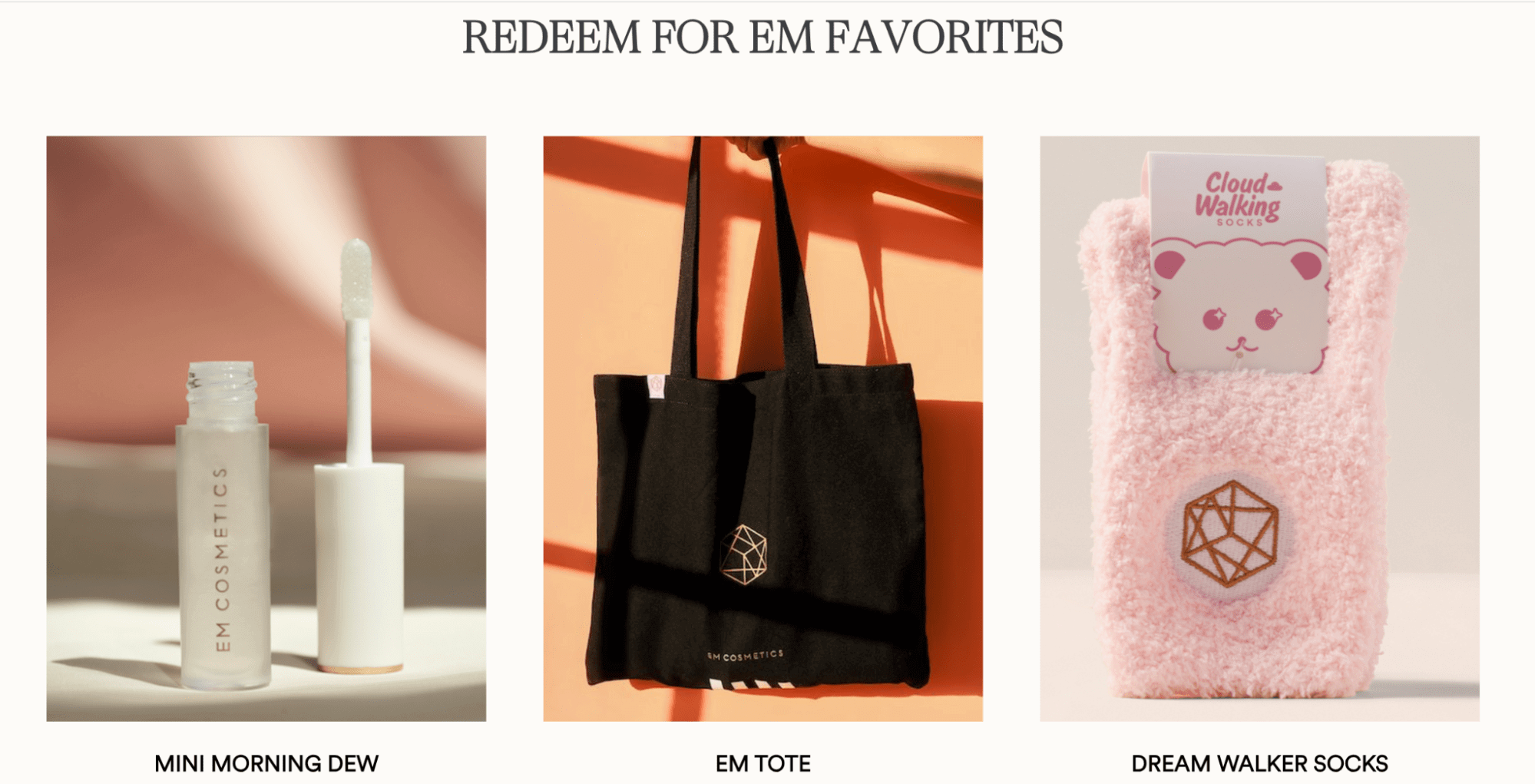In today’s competitive eCommerce landscape, customer loyalty plays a crucial role in the success of every brand. One of the most effective ways to foster that loyalty is through loyalty programs. These programs are designed to reward and incentivize customers for their continued support and engagement, while promoting repeat purchases and long-term retention.
But how does a brand get started with loyalty programs? In this article, we will explore the different types of customer loyalty programs, discuss their benefits, and highlight 11 successful examples that have made a significant impact on businesses across various industries.
What are customer loyalty programs?
Customer loyalty programs are structured marketing programs designed to retain existing customers by offering them rewards, incentives, and exclusive benefits. These programs are typically based on a point system, where customers earn points or rewards for making purchases, engaging with the brand, or participating in specific activities. The accumulated points can then be redeemed for discounts, free products, exclusive access, or other desirable perks.
Benefits of a customer loyalty program
Adding a loyalty program to your offerings can help you boost customer lifetime value and retention, but it comes with a lot of other benefits, too. Let’s look at some of the key benefits:
Boosts revenue
Loyalty programs have proven to be effective in driving sales and boosting revenue. By offering rewards and incentives, businesses can encourage customers to make repeat purchases and spend more money over time.
The desire to accumulate points and unlock additional benefits often motivates customers to choose one brand over its competitors, leading to increased sales and revenue generation. Yotpo’s Loyalty Benchmarks Report showed that within 90 days of launching a loyalty program, brands see an 88.5% increase in average revenue per customer when comparing loyalty redeemers versus non-redeemers.
Builds stronger customer relationships
A well-designed loyalty program can help brands build stronger relationships with their customers. By acknowledging and rewarding customer loyalty, companies demonstrate that they value their patrons’ support and engagement. This fosters a sense of appreciation and strengthens the emotional connection between customers and the brand. As a result, customers are more likely to continue supporting the business and become advocates.
Encourages word-of-mouth marketing
Word-of-mouth marketing is a powerful tool, and loyalty programs can greatly contribute to its effectiveness — especially when loyalty is combined with a referral program. When customers are satisfied with a brand’s loyalty program, they are more likely to share their positive experiences and referral links with friends, family, and colleagues. These personal recommendations can significantly influence others’ purchasing decisions and attract new customers to the business. Loyalty and referral programs, therefore, not only retain existing customers but also act as a source of organic marketing.
What are the different types of loyalty programs?
There are many different ways to structure a loyalty program — it all comes down to the type of business you have and your goals for the program. Here are the most common types:
Points-based loyalty program
Points-based loyalty programs are among the most popular types. Customers earn points based on their purchase value or other predefined actions. These points can be accumulated and redeemed for rewards such as discounts, free merchandise, or special experiences. The transparency and simplicity of points-based programs make them easy to understand and participate in for customers, leading to higher engagement and retention rates.
Tiered loyalty program
Tiered loyalty programs segment customers into different tiers or levels based on their loyalty and engagement. As customers move up the tiers, they unlock additional benefits and rewards. This approach fosters a sense of exclusivity and progression, encouraging customers to strive for higher tiers by increasing their engagement with the brand. Tiered programs often create a sense of competition and motivate customers to remain loyal to reach the next level.
Value-based loyalty program
Unlike traditional loyalty programs that offer explicit rewards or benefits, value-based loyalty programs take a different approach. Instead of focusing on discounts or perks, these programs center around the brand’s values and seek to align with the values of their customers. This can take the form of actions like donating points to charity, earning points for climate-friendly actions, or incentivizing users to do something good in their communities.
This approach makes customers feel empowered knowing that their purchases contribute to a greater cause, and they become more emotionally invested in supporting the business. By embracing this approach, businesses aim to foster deeper connections and build meaningful relationships with their customers.
Paid loyalty program
While most loyalty programs are free to join, some businesses offer paid loyalty programs that provide exclusive benefits to members who pay a membership fee. These programs often offer premium perks, such as free shipping, personalized services, or enhanced rewards. Paid loyalty programs can generate additional revenue for the business while providing a sense of exclusivity and added value to customers who choose to participate.
Omnichannel loyalty program
An omnichannel loyalty program integrates customer engagement across multiple channels, including physical stores, websites, mobile apps, and social media platforms. This type of program offers a seamless experience, allowing customers to earn and redeem rewards regardless of the channel they choose. By providing a consistent and convenient loyalty experience, businesses can enhance customer satisfaction and loyalty across channels.
11 successful loyalty program examples
Want to see some of the best loyalty programs in action? Here are the unique ways that top brands are using loyalty to drive retention:
1. DIME Beauty
DIME Rewards, DIME Beauty’s tier-based loyalty program, offers an extra perk to surprise and delight members. The brand’s highest tier is invite-only, reserved for the brand’s most loyal members. This provides an added incentive for customers to keep spending once they’ve reached the Gold tier, and the secrecy around it makes it highly covetable.

2. Fat and the Moon
Plant Posse Rewards, Fat and the Moon’s loyalty program, carries through the health and wellness brand’s natural, sustainable ethos, from the names of the tiers (Plant Curious, Botanical Bestie, Herbaceous Hedone) to the actions rewarded. Customers can earn extra points for choosing carbon-neutral shipping at checkout. This provides the brand with another touchpoint to connect with customers on shared values.

3. Moroccanoil
Moroccanoil Rewards is a robust loyalty program, where the hair care brand offers members flexible benefits and tons of perks. Members at the highest tier receive exclusive gifts, the opportunity to test out new products, and a “Gold Concierge Service.” Once members receive enough points for a reward, they have the choice of redeeming for a discount at checkout or receiving physical products.

4. LSKD
LSKD Rewards is a points- and tier-based loyalty program. The activewear brand is all about building community, so they incentivize members to participate with points for joining their Facebook group. To ensure members know how to take full advantage of the program, the brand offers a visual at the bottom of their rewards page taking members through the steps of redeeming on both the website and the brand’s app.

5. Jane Iredale
Jane Iredale’s Beauty Rewards offers members points as incentives for filling out a profile and skin quiz. This enables the brand to collect more zero-party data and offer members a more personalized experience based on their unique skin care needs and goals.

6. The Honest Kitchen
Honest Kitchen Rewards offers incentives for unique actions. Members can earn points by reading about the pet food brand’s mission and what it means to be a Certified B Corporation, giving members a way to connect with the company on shared values. The brand also incentivizes customers to share True Stories of their pets’ experience with the brand. This helps The Honest Kitchen drive emotional loyalty and foster deeper connections with customers.

7. EM Cosmetics
The Magic Universe, EM Cosmetics’ tiered rewards program, takes the points-for-products approach a step further, offering members the opportunity to redeem their points for discounts at checkout or for branded merchandise, like tote bags and socks.

8. Homeworx
Club Homeworx is a tier-based loyalty and referrals program. Not only does the scented candle brand offer a “Give $10, Get $10” referral bonus, but they further incentivize referrals through their loyalty program, offering 200 points for each successful referral. For Homeworx, the power of loyalty and referrals to reach more customers and retain existing ones is worth doubling down on.

9. Nuun
Nuun+ Rewards offers loyalty members points for standard actions like leaving a product review or following the brand on social media. Where they stand apart is how the beverage brand uses loyalty to incentivize subscriptions. The brand offers its biggest reward — 200 points — to customers who complete five subscription renewals, on top of the 15% discount they already get for subscribing.

10. Diane Von Furstenberg
When your brand has a famous founder, you can lean on that celebrity to offer enticing rewards to your VIPs. Members who reach Emerald status, the top tier of DVF Insider, the luxury apparel brand’s rewards program, are entered into an annual drawing to meet Diane or Talita Von Furstenberg.

11. PLAE
As a mission-driven children’s apparel brand, PLAE saw an opportunity to foster customer loyalty while also doing good. PLAE Rewards members have the option to donate their points to Race4Good, an organization that supplies shows to families in need.

Loyalty rewards programs FAQs
Here are some of the questions brands ask most often when getting started with loyalty programs:
What makes a loyalty program effective?
The best loyalty programs provide customers with value beyond just points for purchase. Offering a personalized experience based on loyalty data and offering the rewards and perks that matter most to your customers will ensure your reward program success.
Are rewards programs worth it?
Our Loyalty Program ROI Calculator can help you determine the revenue uplift you can potentially see from a strategic loyalty and referrals program.
What’s the difference between brand loyalty and loyalty programs?
Brand loyalty is the customer’s emotional attachment and preference for a brand, while a loyalty program is a tactical approach used by businesses to nurture and enhance that brand loyalty by offering rewards and incentives. Brand loyalty is a broader concept that encompasses the customer’s overall relationship and connection with the brand, while loyalty programs are specific tools used to strengthen that bond and drive customer loyalty.
Customer loyalty programs are powerful tools that can enhance customer engagement, drive revenue, and build stronger relationships between businesses and their customers. By implementing the right type of loyalty program and offering valuable rewards and incentives, companies can cultivate customer loyalty and benefit from increased sales and retention. With Yotpo’s retention marketing platform, you can connect your loyalty program to your reviews, SMS, email, and subscriptions to keep customers motivated and engaged on every channel.



